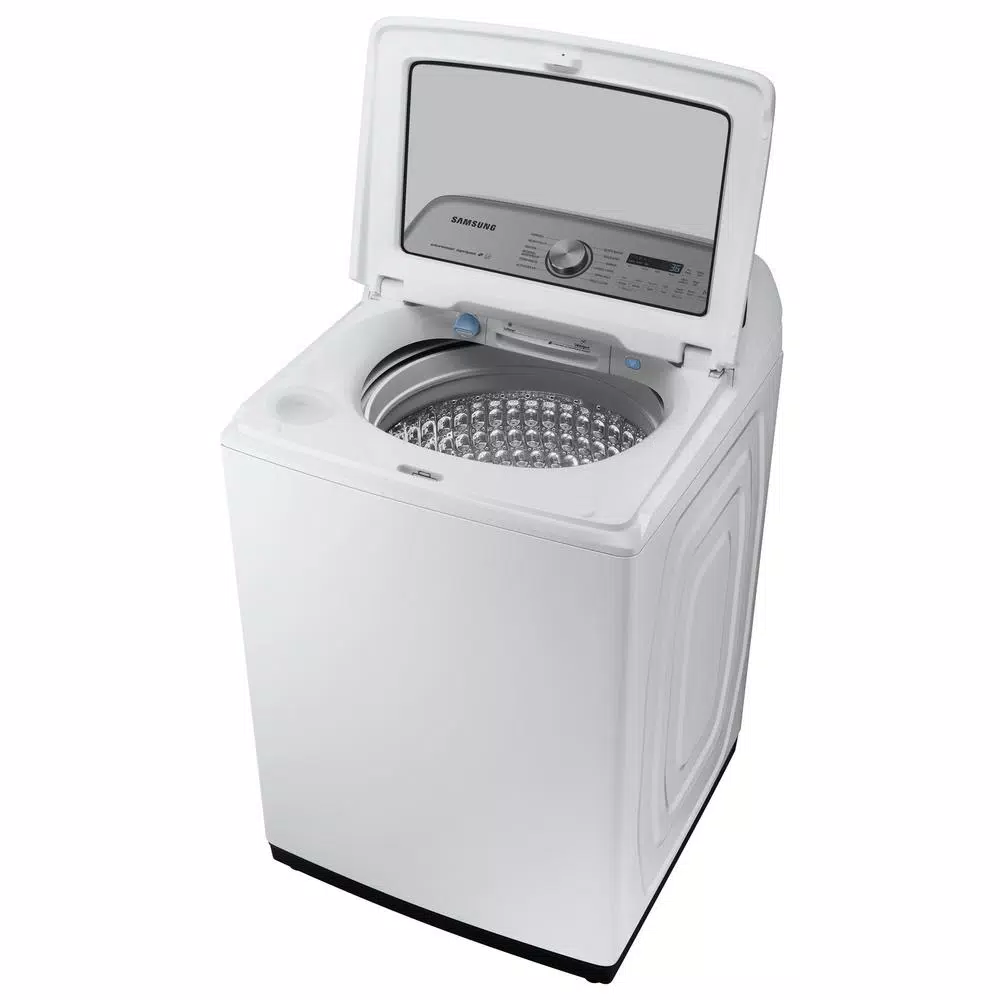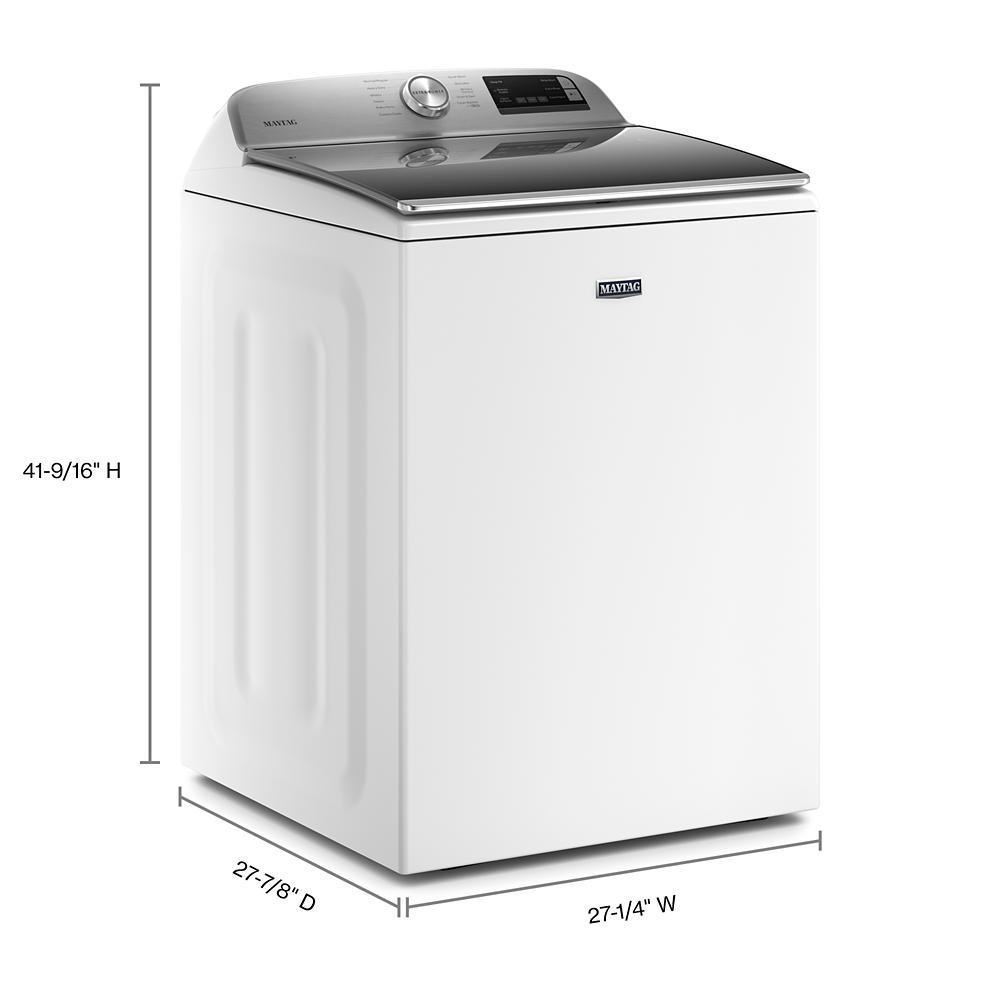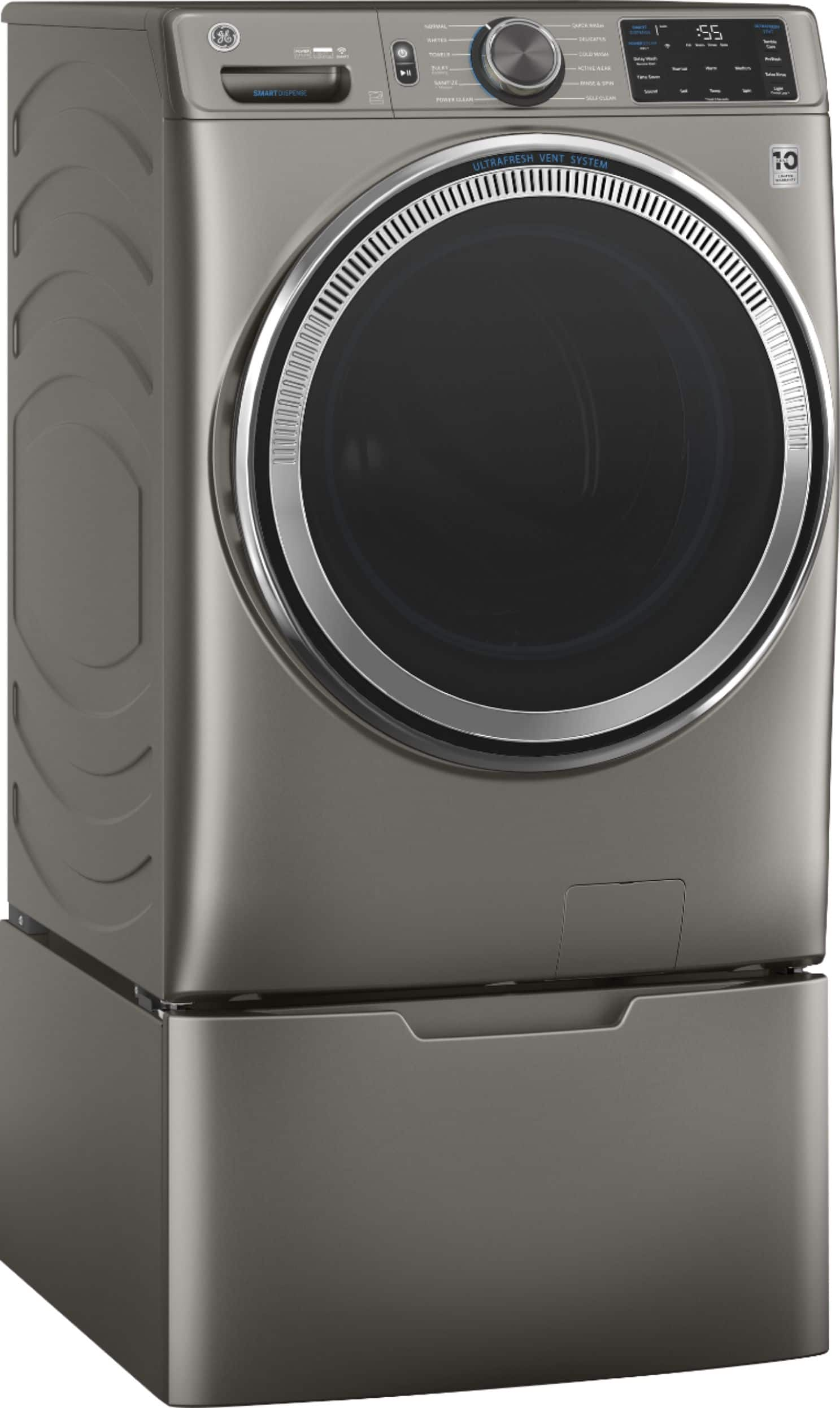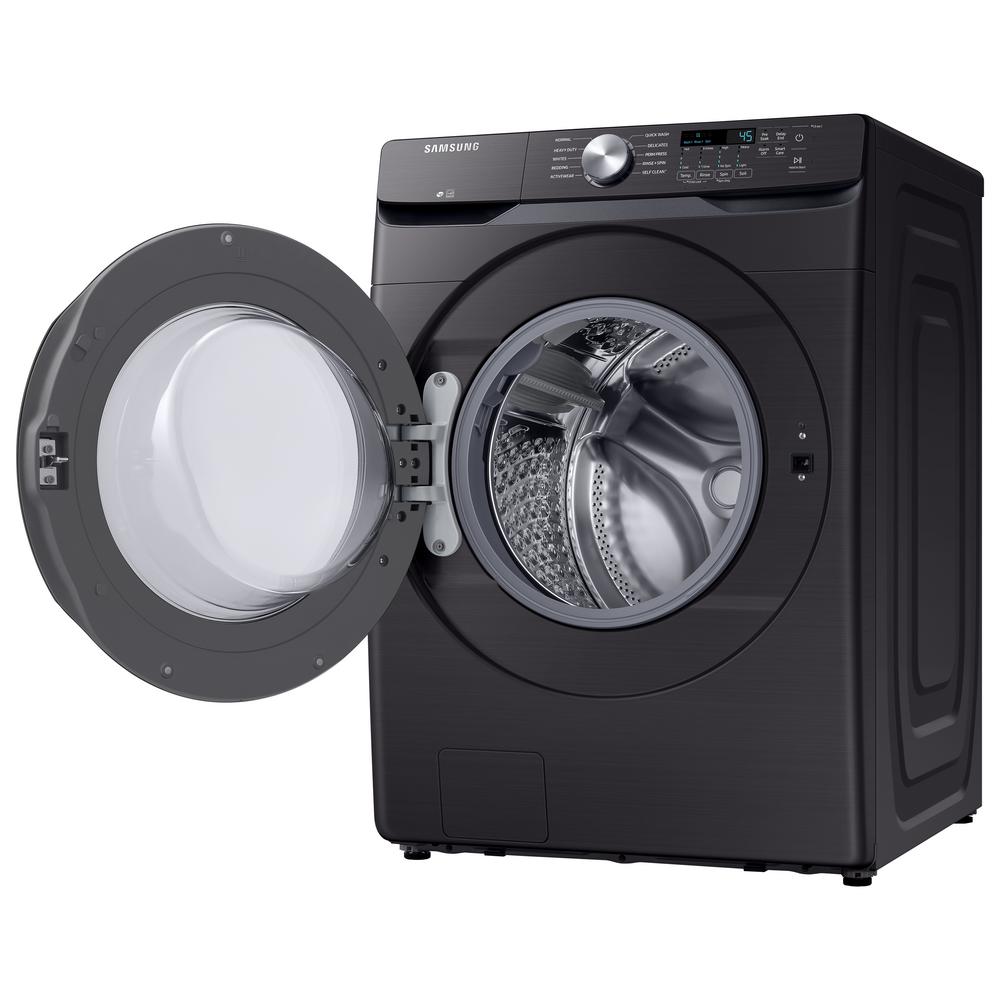Samsung 5.0 cu. ft. High-Efficiency in White Top Load Washing Machine with Super Speed, ENERGY STAR
Super Speed: Fast, thorough washing in just 36 minutes. Active WaterJet: Built-in water faucet for easy pretreating. EZ Access: Easily reach items at the bottom of the tub.
Samsungs 5.0 cu. ft. capacity top load washer features Super Speed technology, which allows you to wash a full load in just 36 minutes1 without sacrificing cleaning performance. It is also equipped with Active WaterJeta built-in faucet that lets you pretreat stained clothes with a press of a buttonand an EZ Access tub design that allows you to easily reach the bottom of the washer tub, stretch free.
- Super Speed – Uses advanced cleaning technologies to wash a full load of laundry in just 36 minutes1, without sacrificing cleaning performanc
- Active WaterJet – Built-in water faucet lets you easily pretreat soiled or stained clothes with a press of a butto
- New EZ Access tub design allows you to easily reach the bottom of the washer tub to remove your clothes after the cycle finishes
- Deep Fill -Choose to maximize the water level used during the washing cycle
- Smart Care -Easy troubleshooting from the convenience of your smartphone2
- VRT Plus Technology -Reduces noise and vibration for quiet washing
- Swirl+ Tub Interior -Improved tub pattern extracts more water more quickly
- Self Clean -Keeps your washer tub fresh and clean
- Soft-Close Lid -Closes smoothly, safely, and silently
- ENERGY STAR Certified -Eco-friendly and energy-efficient
- Accessibility (AUI, Braille) -Designed for easy use for everyone
- 12 Preset Washing Cycles – More cycles to best suit your washing needs
- 8 Additional Washing Options – More options to enhance your washing cycle, providing optimal care for all fabric types
- 5 Temperature Levels -Select the ideal temperature to wash your clothes gently and thoroughly
- Matching Dryer: DVE50R5400W (Electric), DVG50R5400W (Gas)
- 1 Based on using Super Speed on a Normal cycle with an 8 lb. load
- 2Requires Samsung Smart Washer/Dryer App. The Samsung Smart Washer/Dryer app supports Android OS 2.3.6 or later and iOS 3 or later for iPhone models. Smart Washer/Dryer App available in App Store and Play Store
Additional information
| Capacity - Washer (cu. ft.) | 5 |
|---|---|
| Height With Lid Open 90 Degrees (In) | 58.1 |
| Product Depth x Height x Width (in.) | 29.4 x 44.6 x 27.5 |
| Certifications and Listings | Energy Star,UL Listed |
| Manufacturer Warranty | One (1) Year Parts and Labor. Three (3) Years Stainless Steel Tub (Part Only). Ten (10) Years Direct Drive Motor (Part Only) |






by Charlie
We ordered the Samsung washer and dryer online. We were impressed that the delivery and the install was punctual as promised. We are very pleased and much satisfied with our selection. The washer is efficient and possesses a quiet operation. The multiple wash cycles and the pre-wash spout are awesome. Love the extra volume as well. Couldn’t be happier!
by Roger
So far so good with new washer. Love the color.
by Tooften
Best & Largest washing machine I have ever used, HIGHLY recommend it!
by Lydia
Nice choices and controls. Clothes come out cleaner than previously.
by Junior
We had it now for 2 months. Excellent machine so many different features and saves water and money.
by Adam
I love this washer, the size of it is HUGE and can handle the biggest blankets plus more. I really like the option to add more water to the load.